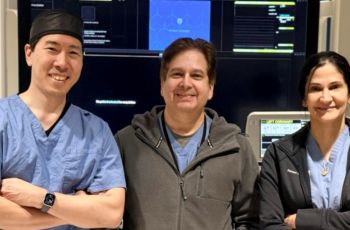WASHINGTON (June 7, 2017) — Centenarians have a lower incidence of chronic illness than those in their 80s and 90s, according to research from the George Washington University (GW).
The centenarian population is one of the fastest growing in the country, according to the United States Social Security Administration. They are predicted to exceed one million by the close of this century, little is known about why this generation has achieved such longevity. Raya Elfadel Kheirbek, MD, MPH, associate professor of medicine at the GW School of Medicine and Health Sciences, and geriatrician and palliative care physician at the Washington, D.C. Veteran Affairs Medical Center (VA), wanted to understand what factors contributed to their long life.
Kheirbek and her team looked primarily at octogenarians, nonagenarians, and centenarians within the VA. The sample that they studied comprised mostly of white males that had fought in World War II. The results were published in the Journal of the American Geriatric Society.
“Additionally, this generation lived through the Great Depression,” said Kheirbek. “It is a wonder, considering the hardships they had faced, that they have achieved such longevity. This never before studied group of centenarians at the VA imparts a very important message of resilience to anyone struggling as they did.”
A key factor that Kheirbek and her team observed in these individuals is that, due to their military background, many had a developed sense of discipline and therefore were keen to make healthy decisions; many did not smoke or drink. The team also offered the hypothesis of compression morbidity as a potential explanation for the extended health span in an individual’s life span. The hypothesis states that the lifetime burden of illness could be reduced if the onset of chronic illness is postponed until very late in life, or as Kheirbek put it, “the older you get, the healthier you have been.” Her work with a 108-year-old woman inspired this study.
“Characteristics and Incidence of Chronic Illness in Community-Dwelling Predominantly Male U.S. Veteran Centenarians” is available in the Journal of the American Geriatric Society.


